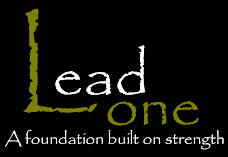Increase performance & reduce injury by clarifying the brain's proprioceptive mapWhy training barefoot is beneficial
Sara Cheatham M.S., Sr. RKC
Proprioception can be thought of as the brain's ability to know where the body is in space and time without keeping constant conscious awareness of it and the world around it. This constant feedback and feed forward system is possible because of the influence of mechanoreceptors and nociceptors housed throughout the body, with highest concentration in joint abundant areas such as the feet, hands, and spine. Proprioception is for an individual what an actor wearing a motion sensory suit is to generating 3-D computer images for a movie; it provides a map of the individual's body.
Proprioception is a survival based concept that can be enhanced or inhibited by shoes and training surface. Because the feet have large numbers of receptors, they significantly influence proprioception. When stiff, thick-soled, highly cushioned, tightly laced shoes are worn, even for a short period of time, the proprioceptive map becomes blurred making the individual vulnerable and unstable.
Footwear is a highly underestimated in its influence upon pain and injury. Shoes have become more of a style and status symbol than protective, functional aids for walking and running. It becomes quite a reckless way of operating. The atrophying effects of wearing a cast to immobilize a broken arm or leg can easily translate to weakened feet from wearing unsatisfactory foot wear. Shoes marketed as "stabilizing," "motion controlled," and "cushioned," decrease foot mobility like casts and therefore decrease mechanoreception of the feet. The best shoe choice is one that can bend in half at the arch (when not on the foot). Decreased mechanoreceptors in the feet from "stable," "motion controlled," or "cushioned" shoes is like removing sensors from an actor's motion sensory suit; There is no feed to or from the feet, and ultimately to where the body connects with the earth.
Furthermore, as mechanoreceptors decrease, nociceptors increase. Nociceptors transmit noxious stimuli, such as pain, to the brain. Repetitively twisting and spraining an ankle in the same (physiological) spot is an indication of high nociceptors, low mechanoreceptors, and translates to poor proprioception. Operating with poor proprioception and under a constant influence of threat from foot and ankle pain, caused by poor shoe choice, leads to an individual's subconscious constantly being on guard to protect against injury. If the brain is consumed by protecting against injury it cannot perform optimally in the autonomous task of walking, none-the-less the stress of lifting and moving under heavy training loads.
Choosing thinner soled, more mobile shoes force the feet to re-wire to increase mechanoreceptors, decreasing nociceptors. The feet become conditioned to provide support themselves, rather than the shoes. Doing so will resolve, or at least decrease the incidence of strains, sprains, and pain around the feet and ankles (which incidentally causes pain throughout the body) as well as improve physique. Physical improvement is a result of a clear proprioceptive map: More and better feedback to the brain from the entire system improves the brain's message relaying ability and agility.
In addition to poor shoe choice, it has become popular to cross-train on equipment such as elliptical trainers and treadmills to improve the cardiovascular system. However, this provokes more risk than benefit. Our systems are hard-wired to function in a world that our posterior chain works against (Newton's Law) and moves past as we progress across terrain. Treadmills, elliptical trainers, and the like, skew the proprioceptive map by confusing the nervous system. Because the terrain moves under us, yet stays stationary around us, the brain misfires (or does not fire at all) the true movers of locomotion that make up the posterior chain. The carryover to the real world is a confused brain working with an underdeveloped posterior chain, which consequently leads to increased weakness, injury, and chronic pain.
The bottom line is: Neural tone, the clarity of an individual's body map, increases through true proprioceptive enhancement, translating ultimately to healthier muscular tone. This correlates to improved performance and physique with reduced injury, pain, and immobility. Training or cross-training indoors on stationary devices with cushiony, stiff-soled shoes should be discouraged in the effort to expedite training results and goals. Instead, training outdoors in mobile, thin soled shoes, or barefoot as much as possible will enhance neural and muscular tone, respectively.
Sara Cheatham M.S., Sr RKC is also a Level IV Z-Health movement coach currently stationed at Pope AFB/Fort Bragg, NC. Sara is available for workshops, military PT, group sessions, and personal training.







